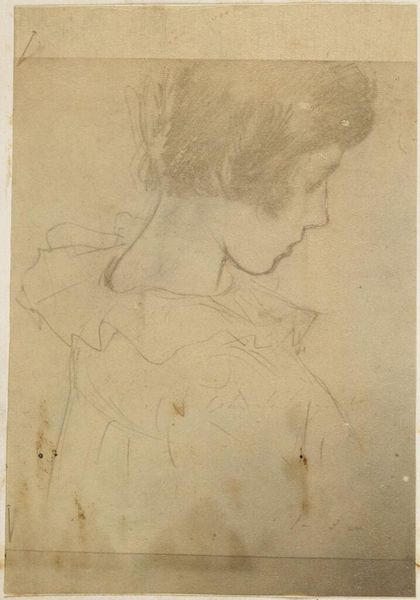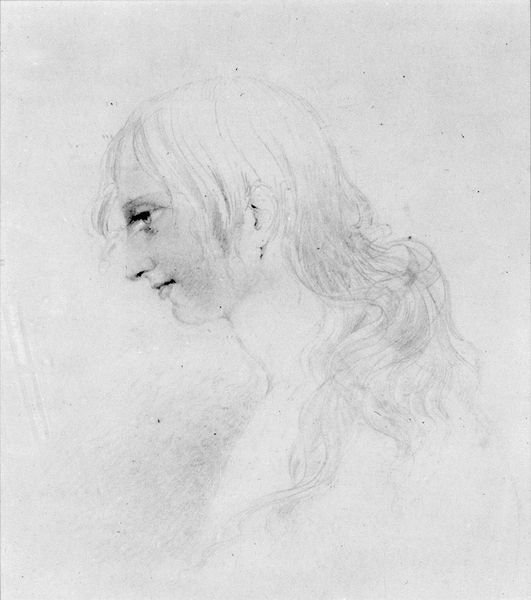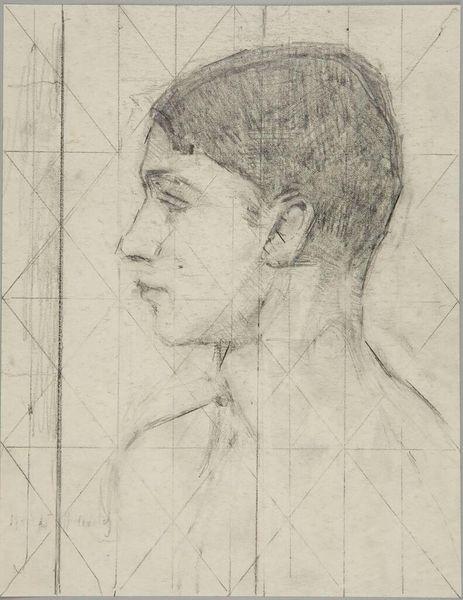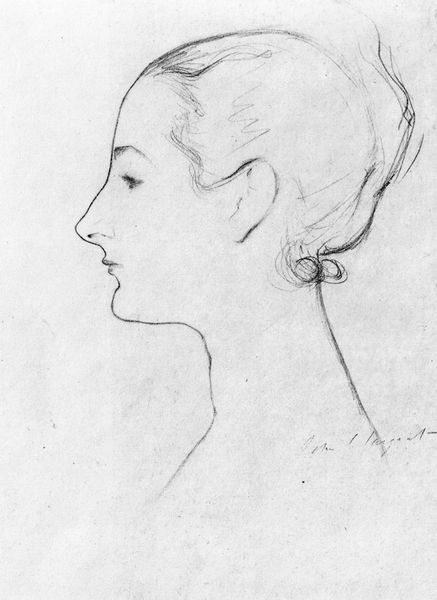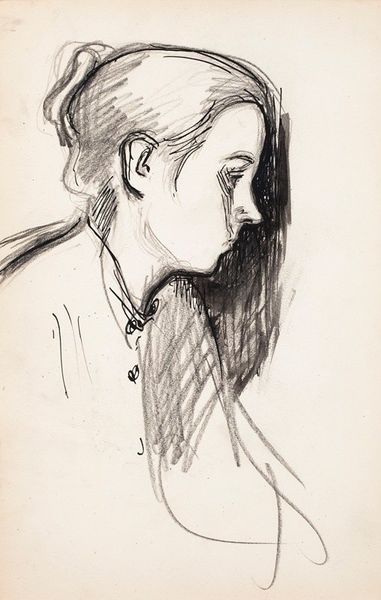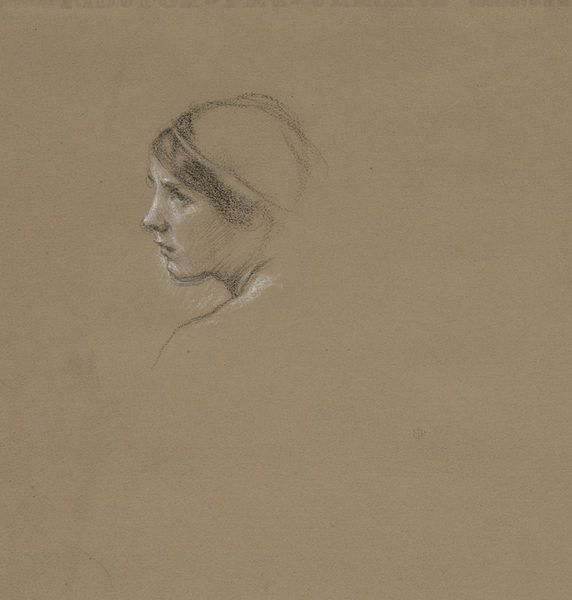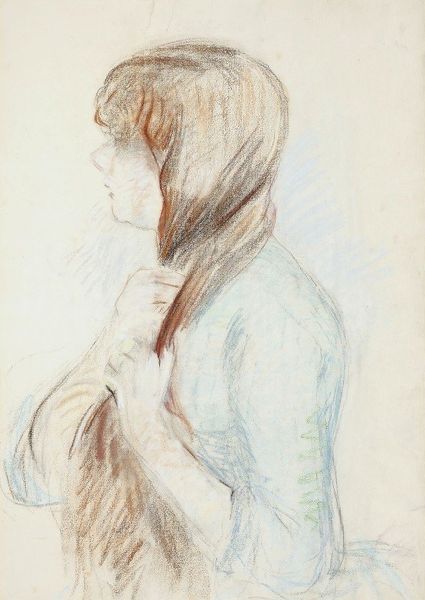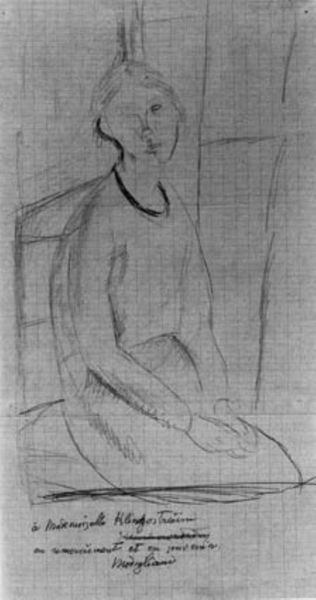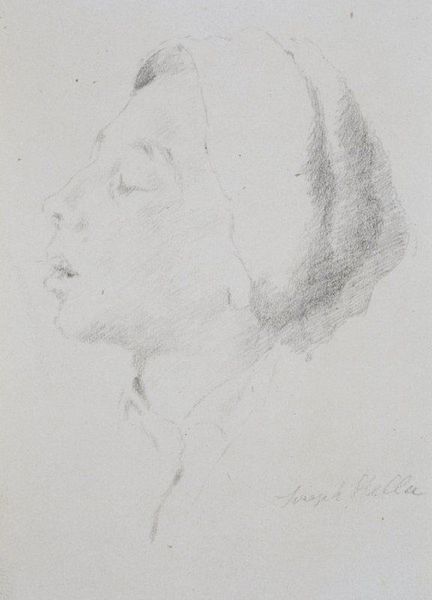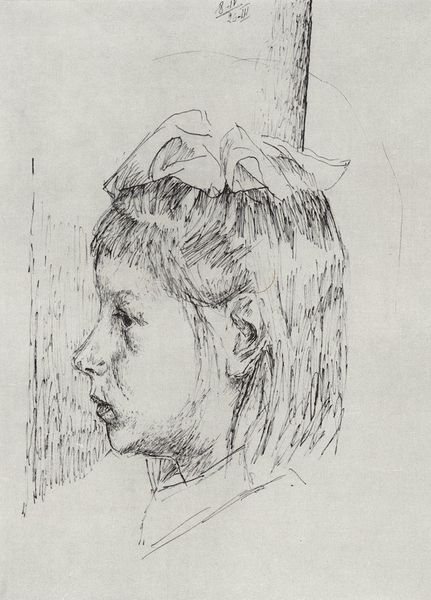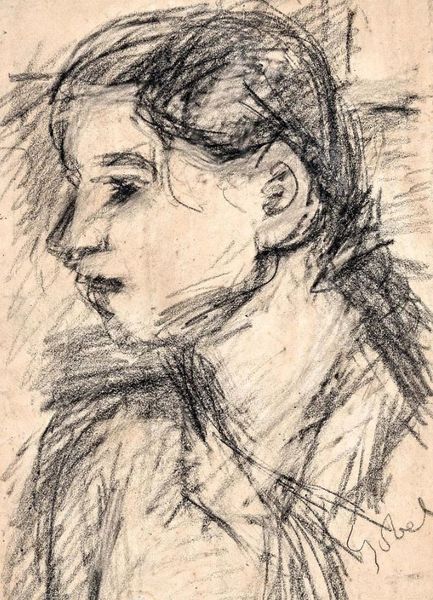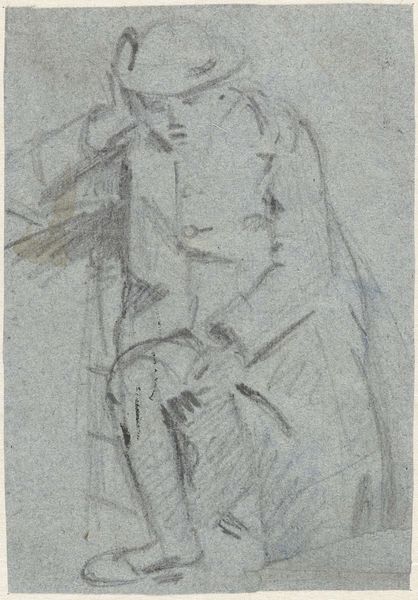
Dimensions: 24.8 x 21 cm
Copyright: Public domain
Editor: So, this is John Singer Sargent's pencil drawing "Dorothy Barnard" from 1885. It’s housed here at the Tate. I’m immediately struck by its softness. What's your take? What do you see in this piece? Curator: The tilt of her head, that deliberate obscuring of her eyes – doesn't it feel like a modern echo of classical depictions of Melancholy? Sargent, like many artists of his era, was deeply immersed in historical tropes. Note the detail of her ruffled collar, drawing a connection between wealth, societal standing, and an underlying psychological state. Does this pose invoke ideas about idealized, feminine, and mournful figures from mythology or literature for you? Editor: Yes, now that you mention it, there's a sense of contained sadness in her posture. The collar detail definitely points to a certain social class. How intentional do you think Sargent was in drawing that parallel? Curator: Highly intentional, I think. Sargent uses the symbol of the "melancholic woman," to both flatter his sitter – aligning her with art historical ideals of beauty – but he is also creating something resonant for his contemporary audience, a meditation on the burdens of refinement. This melancholic symbol becomes something very potent about Victorian society when connected with portraiture. What remains are codes: dress, demeanor, context, all pointing toward this well-known cultural idea. Editor: I hadn't considered that balance he was striking. Seeing how the melancholic trope fits within the historical context of that period definitely shifted my perspective on portraiture! Curator: Indeed. And how artists can skillfully weave cultural narratives into their art.
Comments
No comments
Be the first to comment and join the conversation on the ultimate creative platform.

